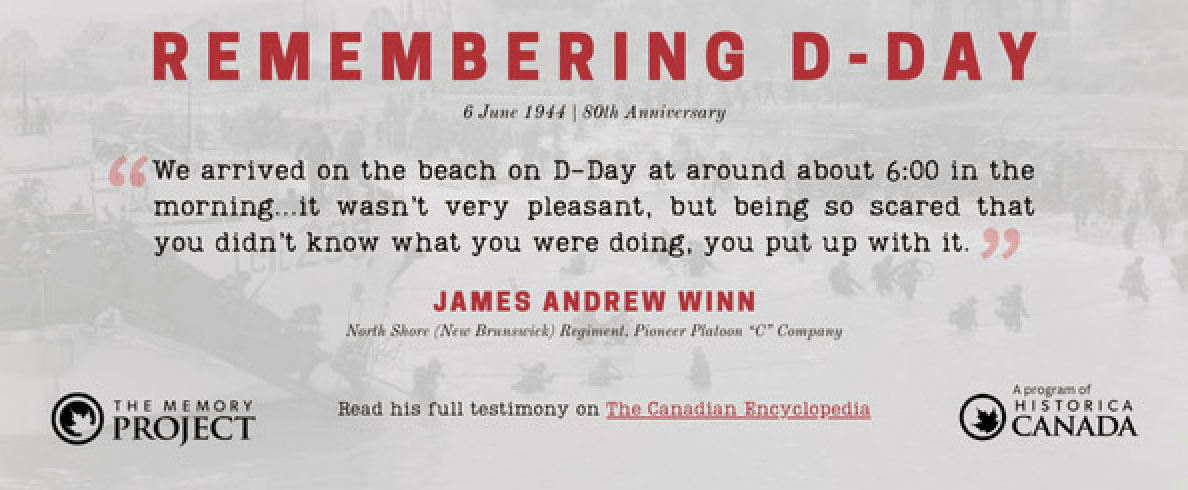Our D-Day 80th Anniversary Series
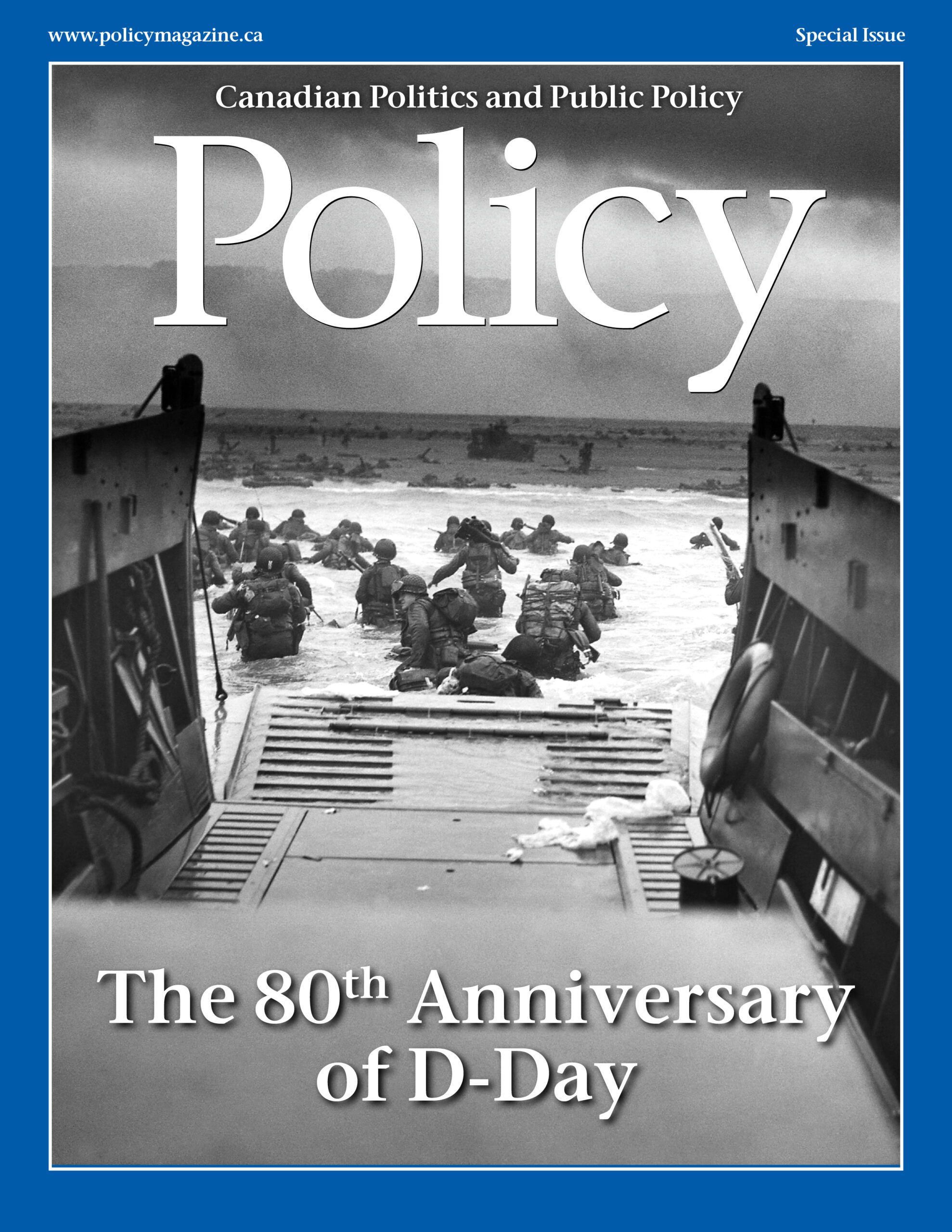
Welcome to our Policy D-Day 80th Anniversary series. First off, a heartfelt thanks to the contributors who’ve written so superbly about the events of June 6th, 1944 and the lives that were lost or irrevocably altered by them as humanity reclaimed history. The image above, taken at 7:40 am local time on D-Day by Robert F. Sargent, a chief photographer’s mate in the U.S. Coast Guard, is titled Into the Jaws of Death, a reference to the line “Into the jaws of Death, into the mouth of hell” from Tennyson’s The Charge of Light Brigade. It depicts American soldiers landing at Omaha Beach, not because we don’t have images of Canadian soldiers (there are many in this series), but because this cover image best captures both the physical and moral moment faced by all the incredibly brave soldiers, from every country present and accounted for, who risked and lost their lives that day. Ironically, with the world once again engaged in a war of values between democracy and tyranny, the meaning and lessons of D-Day are arguably more relevant this year, eight decades later, than in any previous commemoration.
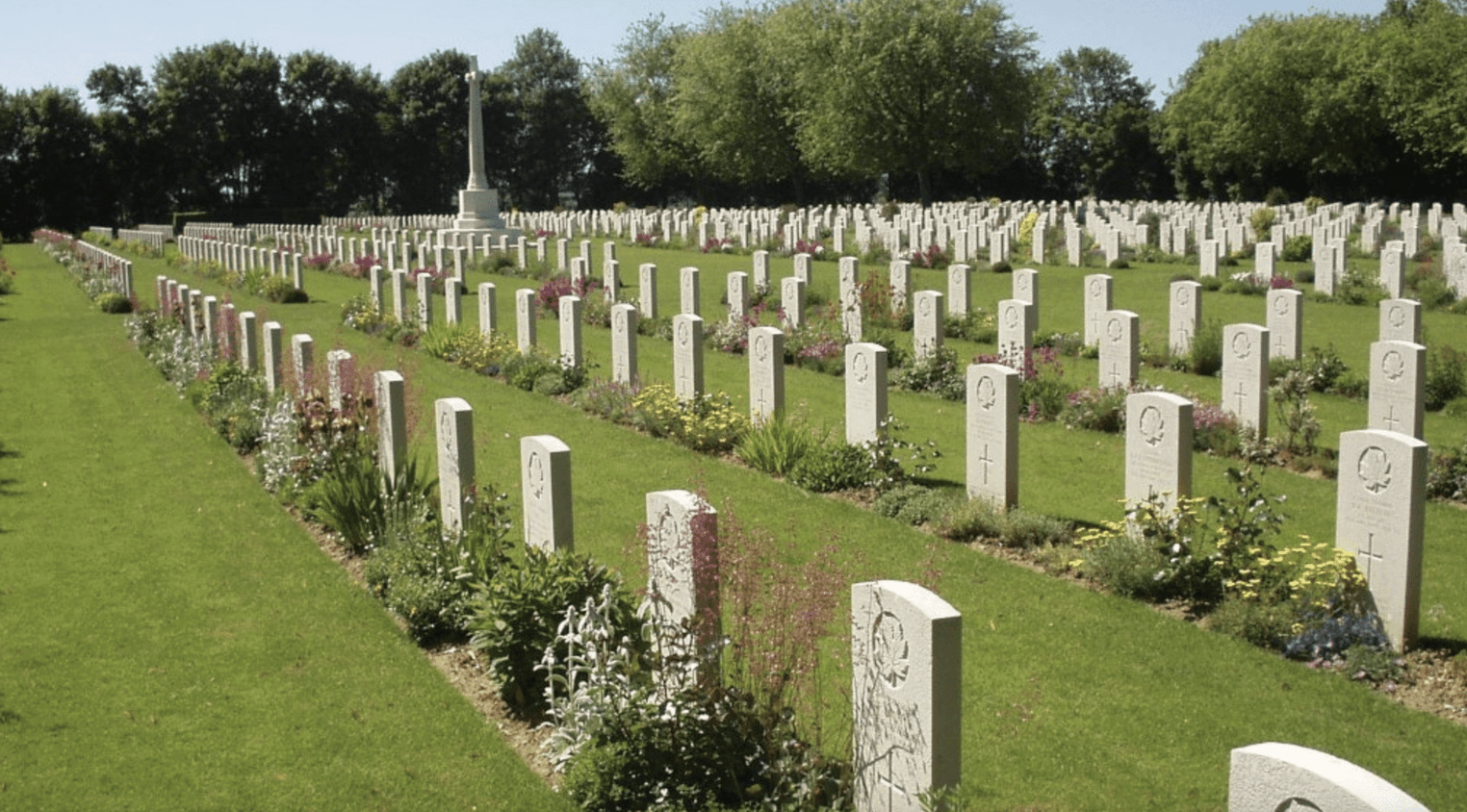
The Canadian War Cemetery at Bény-sur-Mer/Commonwealth War Graves Commission
We begin with Colin Robertson’s big-picture, historical/global context piece, exploring the enormous significance of D-Day 80 and outlining the challenges the world’s democracies face today in humanity’s latest battle against tyranny. “Once again, we are engaged in a war in Europe,” writes Robertson. “The international situation is in turmoil. Revisionist and revanchist forces would return us to a world of spheres of influence, where might makes right. We know from history that this will not work for us.” Here’s Colin Robertson with Lessons from D-Day for a World Order in Peril.

Archie MacNaughton/MacNaughton family
From Historica Canada President Anthony Wilson-Smith, the story behind the hero of Historica’s 2019 D-Day Heritage Minute, Maj. Archie MacNaughton of Black River Bridge, New Brunswick. A First World War veteran and farmer, Maj. MacNaughton left his wife and children in 1940 to serve again in Europe. “Archie led his men off the beach with relatively few casualties,” writes Wilson-Smith of MacNaughton’s final hours on Earth. “They fought inland to the town of Tailleville. He was shot in the hand en route but bandaged it himself rather than report his wound. In Tailleville, the men met unexpectedly heavy German resistance.” Maj. MacNaughton was shot and killed, dying at 47 on D-Day, 4,663 km from home and 4 km from the Bény-sur-Mer Canadian War cemetery where he is buried. Here’s Anthony Wilson-Smith with Archie MacNaughton’s D-Day: How one Soldier Came to Personify Sacrifice.
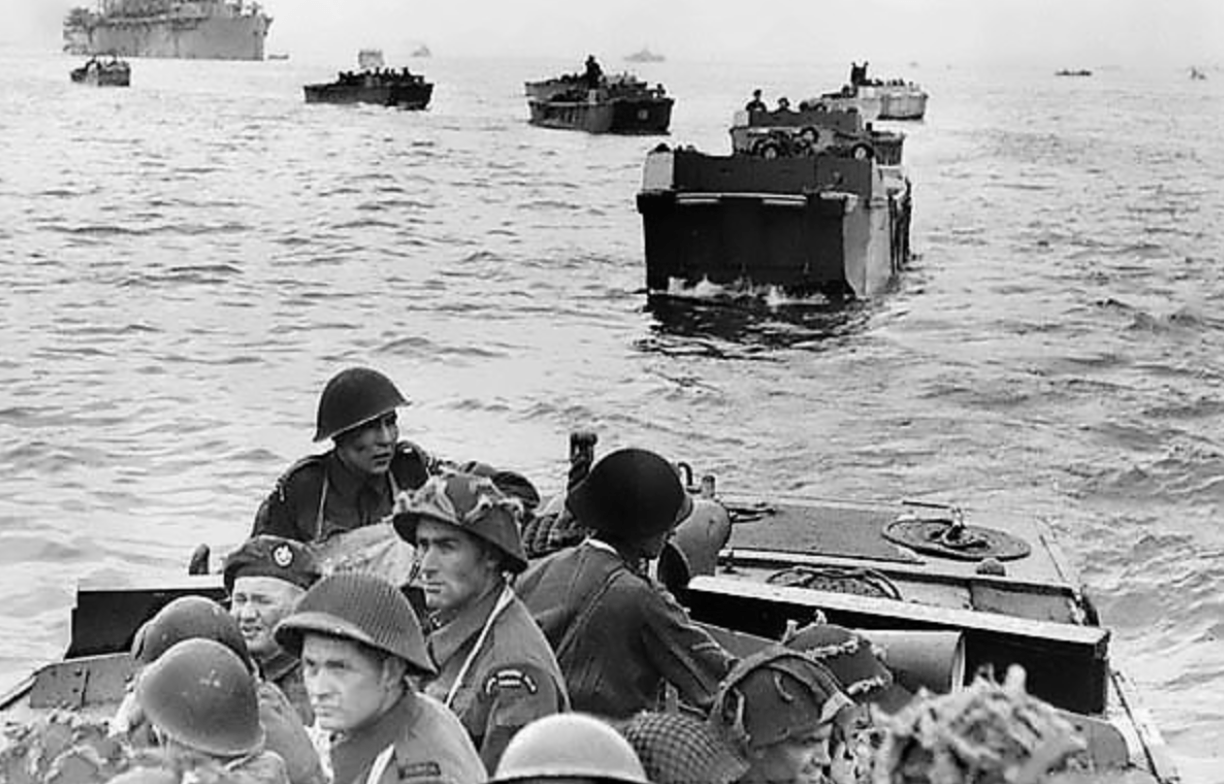
The Royal Winnipeg Rifles landing at Juno Beach on D-Day/LAC
From Carentan-les-Marais, Normandy, we have a lovely piece by Julien Martin-Kwiecien, who works at the D-Day Experience Museum and is producing a documentary about the Royal Winnipeg Rifles. “Here in Normandy, even after 80 years,” writes Martin-Kwiecien, “we all remember what a generation of young Canadians — “Les Canadiens” — did for our freedom and our future at the cost of their youth and their lives.” Here’s From a Still-Grateful Normandy, a ‘Merci’ for Les Canadiens.
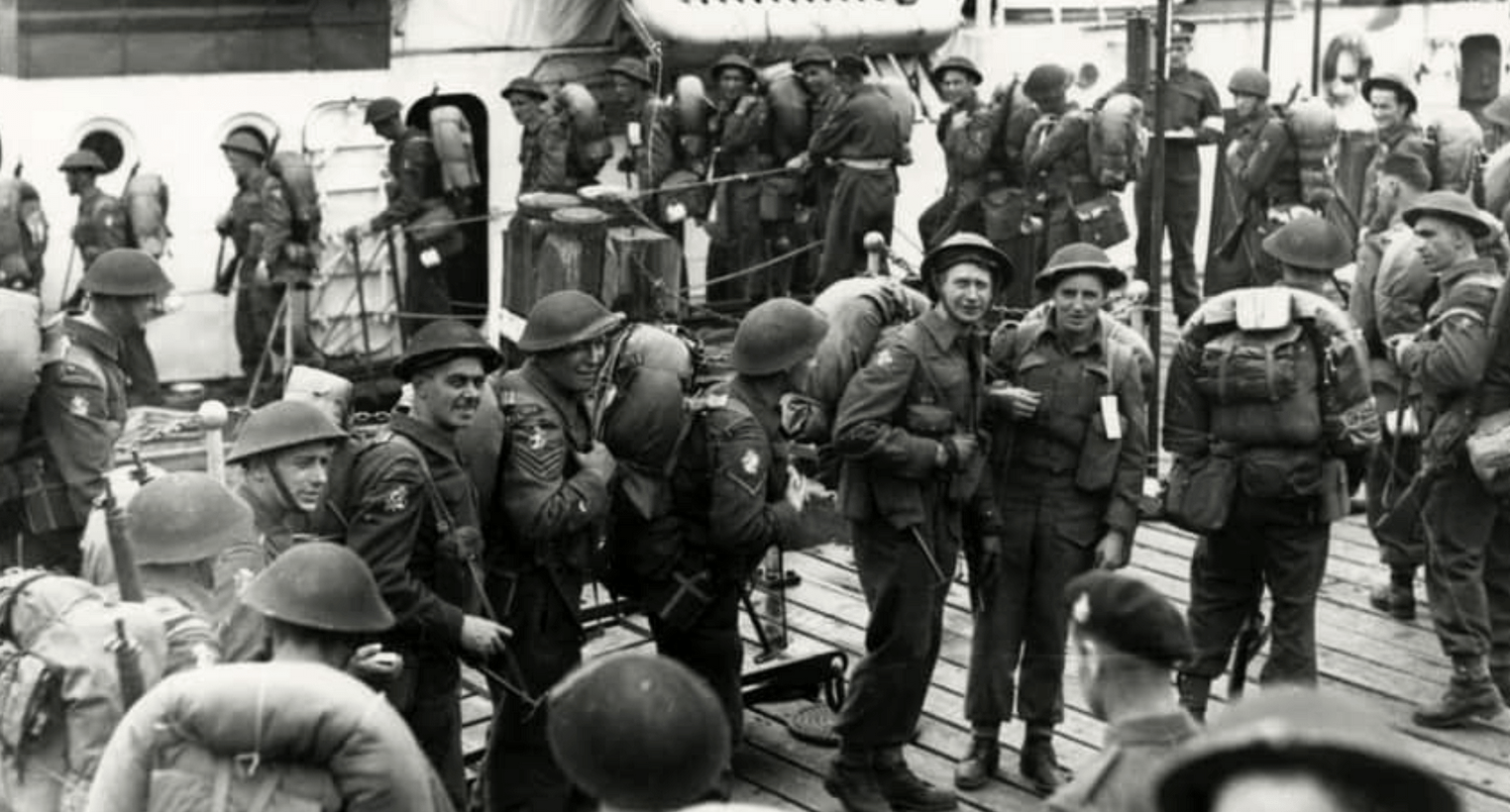 Canadian soldiers embarking for the D-Day landings at Gosport/Portsmouth News
Canadian soldiers embarking for the D-Day landings at Gosport/Portsmouth News
From our Policy columnist, longtime CBC News anchor and Officer of the Order of Canada Don Newman, a wonderful recollection from the D-Day 50th Anniversary celebration in Gosport, the coastal town in Hampshire that was the embarkation point for so many Canadian soldiers heading across the English Channel to Juno Beach. “When they think of D-Day, most people think of Normandy,” writes Don. “But when I think of D-Day, I think of Gosport, on the coast of Hampshire, across the English Channel, where so many Canadian soldiers last slept in a bed before facing their fate.” Here’s Don Newman with D-Day Across the Channel: A Canadian Commemoration in Gosport.
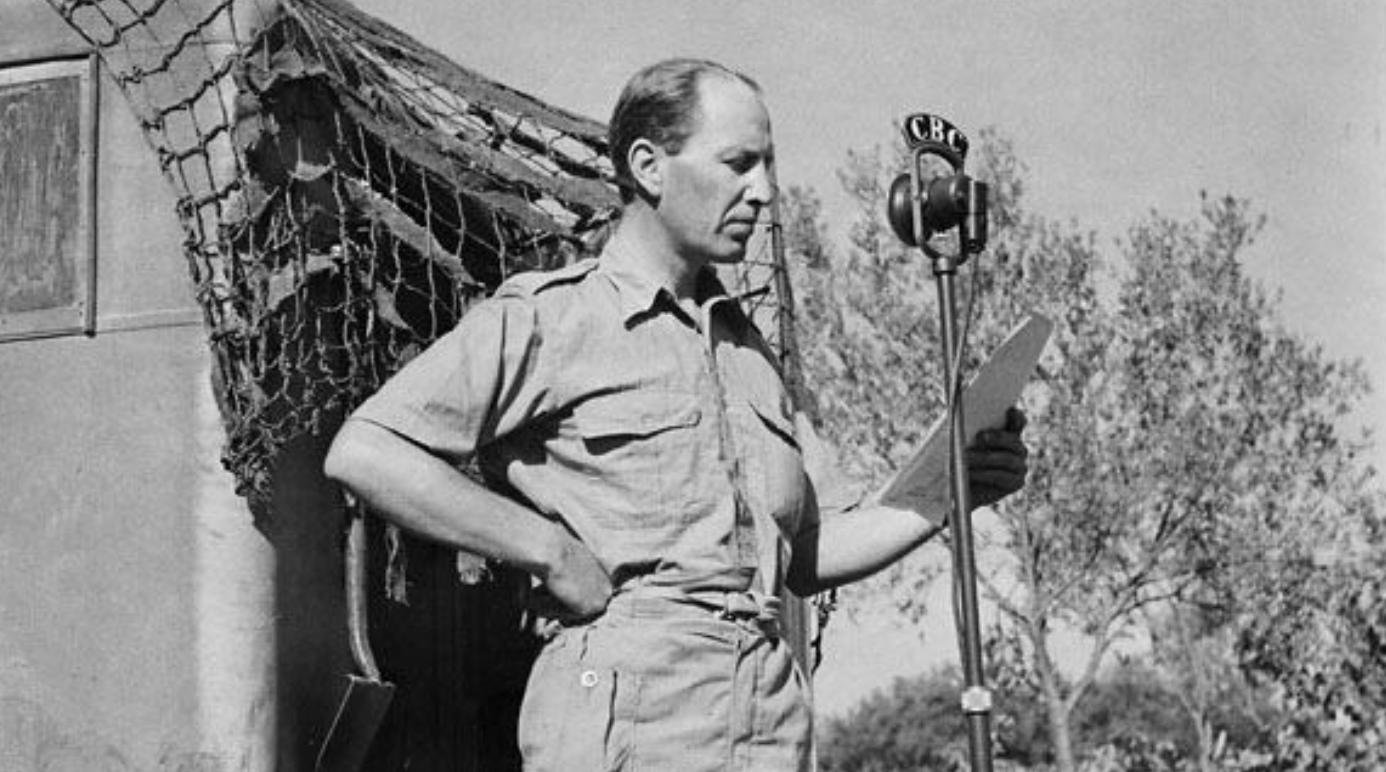 Matthew Halton covering WWII in Europe for CBC Radio (CBC photo)
Matthew Halton covering WWII in Europe for CBC Radio (CBC photo)
From longtime CBC national and international correspondent David Halton, we have a look at the Canadian correspondents who covered D-Day, including David’s father, Matthew Halton, known in his day as Canada’s Ed Murrow. From the shipboard singalong with soldiers headed for Juno Beach to traitorous homing pigeons to the “wild, weeping, lovely welcome” from liberated French citizens, an all-around great read. Here’s Courage and Calvados: The Canadian Correspondents who Covered D-Day. You can order David Halton’s terrific biography of his father, Dispatches From the Front: The Life of Matthew Halton, Canada’s Voice at War, from Penguin Random House Canada.
And, a piece from yours truly, Policy Editor Lisa Van Dusen, on why we are still in awe of, and grateful for, the unbelievable courage displayed on D-Day and the indispensable role it played in liberating a continent and saving democracy. Here’s The Fury of an Aroused Humanity: Why D-Day Still Matters.
Last but by no means least, from Policy contributor Terry Mosher, a.k.a. the legendary Aislin of the Montreal Gazette, we close with the perfect Canadian D-Day tribute…
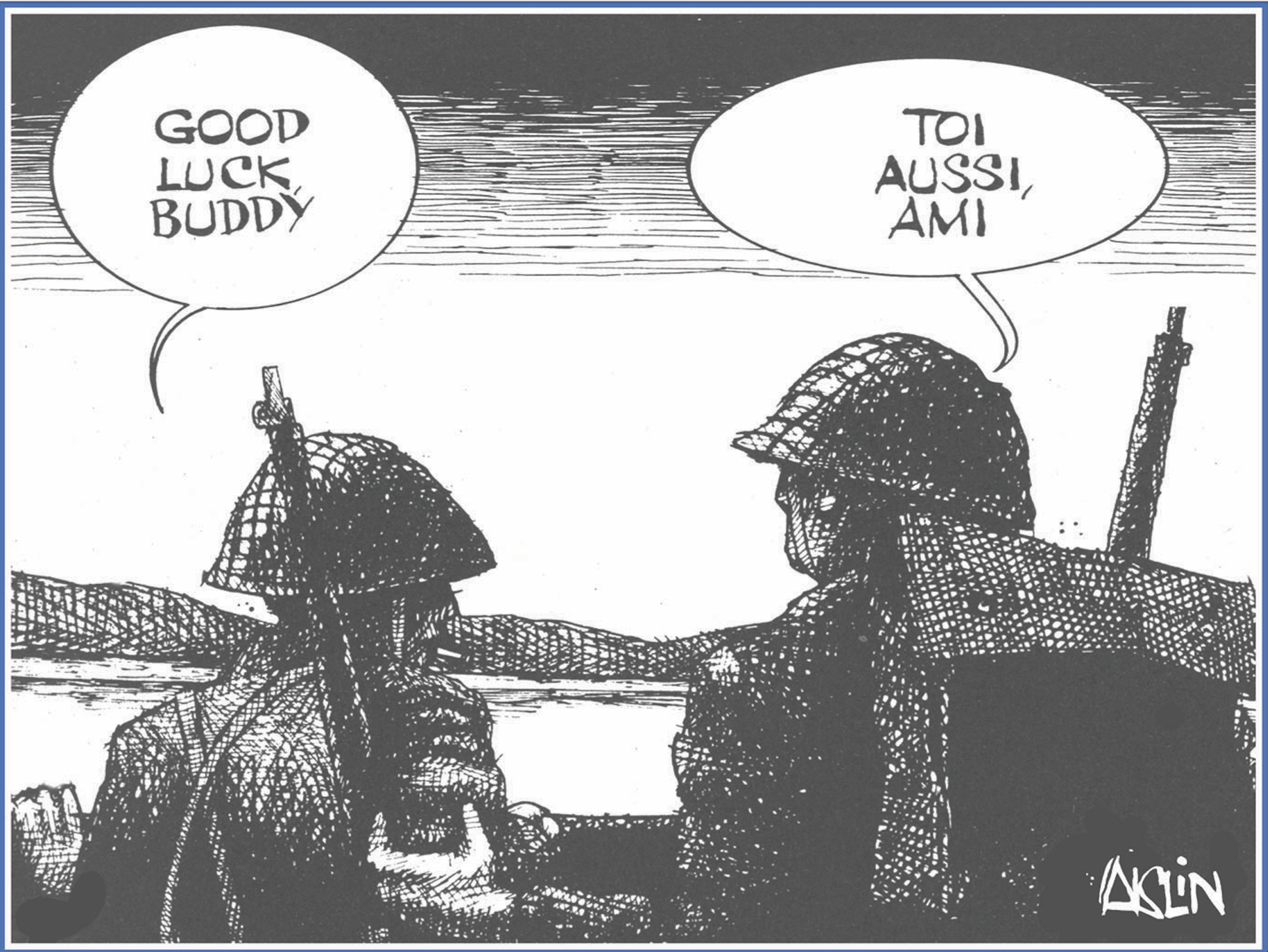
You can donate to the Great Canadian Giving Challenge, which is marking the 80th Anniversary by raising $14,000 — one dollar for every Canadian soldier killed on D-Day — for the Juno Beach Centre in Normandy. You can donate to the Royal Canadian Legion Poppy Fund here.
Visit us at Policy Online, where you’ll find our latest Policy Specials, Columns, Dispatches, Analysis, Book Reviews and Verbatim sections, plus The Week in Policy and all our posted print issues.

